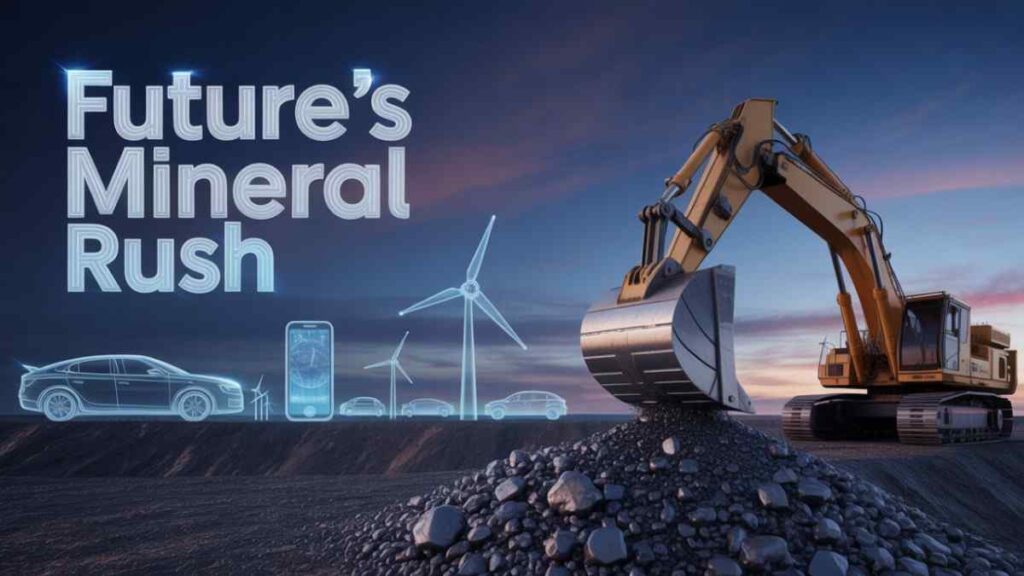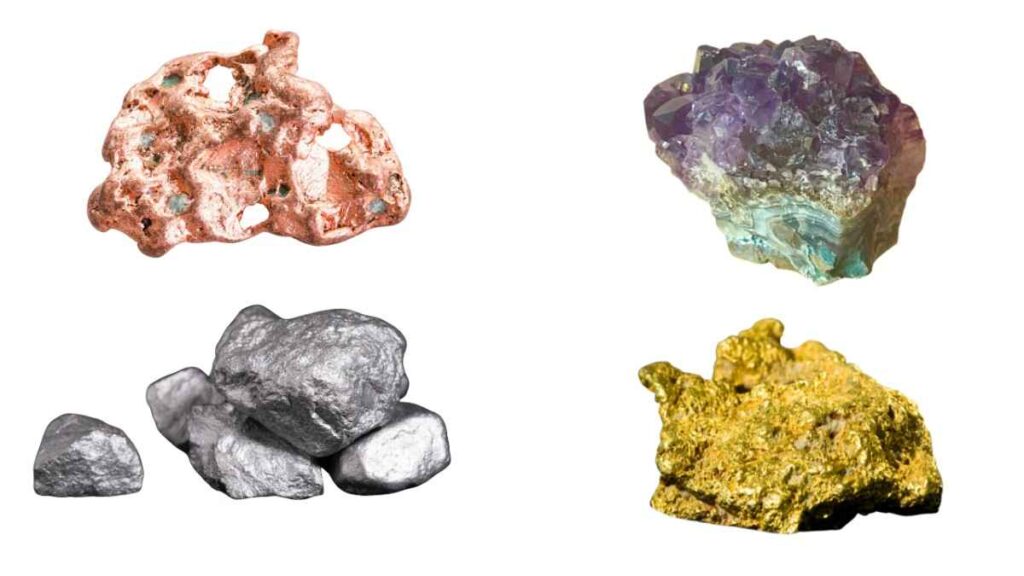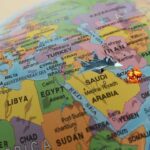
Rare earth metals like lithium and cobalt are the new oil of the 21st century. Discover why nations are fighting to secure them, and what it means for India’s EV and electronics industries.
In the 20th century, oil was the lifeblood of global power. Wars were fought over it, alliances were formed to control it, and economies rose or fell depending on its price.
Fast forward to the 21st century, and a new set of resources has taken center stage — rare earth metals like lithium, cobalt, and neodymium. These minerals are not just components of gadgets and green technologies; they are the backbone of the modern energy transition.
From the batteries that power electric vehicles (EVs) to the magnets inside wind turbines, rare earths have become the “new oil.” And just like oil, they are setting the stage for an intense global scramble — one with massive implications for India’s economy, technology, and national security.

What Are Rare Earth Metals — and Why Do They Matter?
Despite their name, rare earth elements (REEs) aren’t always geologically rare. What makes them special — and difficult — is how scattered they are in the Earth’s crust and how complex their extraction and refining processes can be.
Some of the most crucial ones include:
- Lithium – Vital for rechargeable batteries in EVs, laptops, and mobile phones.
- Cobalt – Enhances battery life and stability.
- Neodymium & Dysprosium – Used in high-performance magnets for wind turbines and electric motors.
- Lanthanum & Cerium – Essential for camera lenses, catalytic converters, and certain types of glass.
Without these materials, our clean energy ambitions — from EV adoption to renewable power generation — would slow to a crawl. They are also critical in defence systems, satellites, and medical devices, making them a strategic resource.
The Global Scramble for Rare Earths
China’s Dominance
China currently controls the majority of rare earth refining capacity. Over the last two decades, it has built an almost unshakable position in the market, often using export restrictions as a geopolitical tool. In 2010, for example, China reduced rare earth exports to Japan during a territorial dispute — highlighting how control over these resources can be leveraged in global politics.
The U.S. Response
Recognizing this dependency, the U.S. has been aggressively investing in rare earth mining projects both at home and abroad. Initiatives are underway to reopen old mines, develop refining capabilities, and diversify supply chains through partnerships with allies.
Australia and Africa
Australia has emerged as a significant supplier, particularly for lithium and rare earth concentrates. Meanwhile, African nations like the Democratic Republic of Congo (DRC) hold massive cobalt reserves, though concerns about labour practices and political instability remain.
Latin America’s Lithium Triangle
Bolivia, Chile, and Argentina collectively hold more than half of the world’s known lithium reserves. These countries have become the focus of investment from China, the U.S., and even India, as global demand for EV batteries continues to rise.
This geopolitical race is no longer just about securing resources — it’s about shaping the balance of power in the clean energy era.
Why This Is Becoming the “New Oil”
Much like oil in the last century, rare earth metals now offer strategic leverage. Nations that control them can influence the manufacturing of EVs, smartphones, renewable energy infrastructure, and even defence systems in other countries.
For example:
- If a major supplier limits exports, global EV production could slow down.
- Price spikes in lithium or cobalt could make clean energy products more expensive, affecting adoption rates.
The global shift toward net-zero emissions has intensified this competition. As countries pledge to cut carbon emissions, demand for clean energy tech — and thus rare earths — is skyrocketing. This has made rare earths as politically and economically significant today as oil was during its peak influence.
India’s Position in the Rare Earth Race
India is both blessed with resources and constrained by limitations.
Domestic Reserves
India’s coastline holds monazite-rich sands containing rare earth minerals, particularly in states like Kerala, Tamil Nadu, and Odisha. In 2023, the Geological Survey of India identified significant lithium reserves in Jammu & Kashmir, and smaller deposits in Karnataka.
Challenges
Despite these resources, India lacks large-scale mining and refining infrastructure for rare earths. Most of our needs — especially for high-purity, battery-grade lithium and refined rare earths — are met through imports, primarily from China.
EV Market Ambitions
Under the FAME (Faster Adoption and Manufacturing of Electric Vehicles) scheme, India aims for rapid EV adoption. However, the industry’s dependency on imported rare earths could become a bottleneck, especially if global prices rise or supply chains face disruptions.
Electronics Manufacturing
With the “Make in India” push, India has attracted major mobile and electronics manufacturers. Yet, the core components — magnets, batteries, chips — still require imported rare earth materials.
Defence Implications
Rare earths are essential for missile guidance systems, radar, and advanced optics. A shortage could directly impact India’s defence modernization programs.
In short, without secure and stable access to rare earths, India’s ambitions in EVs, renewable energy, electronics, and defence could face serious roadblocks.
The Road Ahead — Securing India’s Rare Earth Future
India cannot afford to be a passive player in this race. Here’s what can be done:
1. Boost Domestic Mining Responsibly
Investing in mining technology that minimizes environmental impact is key. Local production could reduce dependency, create jobs, and strengthen supply security.
2. Build Strategic Reserves
Just as countries maintain oil reserves, India could stockpile critical rare earths to cushion against supply shocks.
3. Invest in Recycling
Urban mining — extracting rare earths from discarded electronics — can be a sustainable solution. Startups and research institutions can play a huge role here.
4. Forge Global Partnerships
India can deepen trade relations with resource-rich nations like Australia, Chile, and African countries to secure long-term contracts.
5. Encourage R&D for Alternatives
Research into alternative materials or more efficient designs can reduce dependence on certain rare earths.
By combining domestic development, international cooperation, and technological innovation, India can safeguard its clean energy and tech ambitions.
Conclusion
Rare earth metals may not yet dominate headlines like oil once did, but they are already shaping the economic and political landscape of the 21st century. As the global race for lithium, cobalt, and other critical minerals intensifies, countries that secure reliable access will lead in technology, energy, and defence.
For India, the challenge is clear: act now to secure resources, or risk falling behind in the very industries that will define the future. The race has already begun — and the finish line will decide more than just who leads the EV market. It will determine who shapes the next chapter of global power.
Some Useful Links – AI in Warfare






Leave a Reply